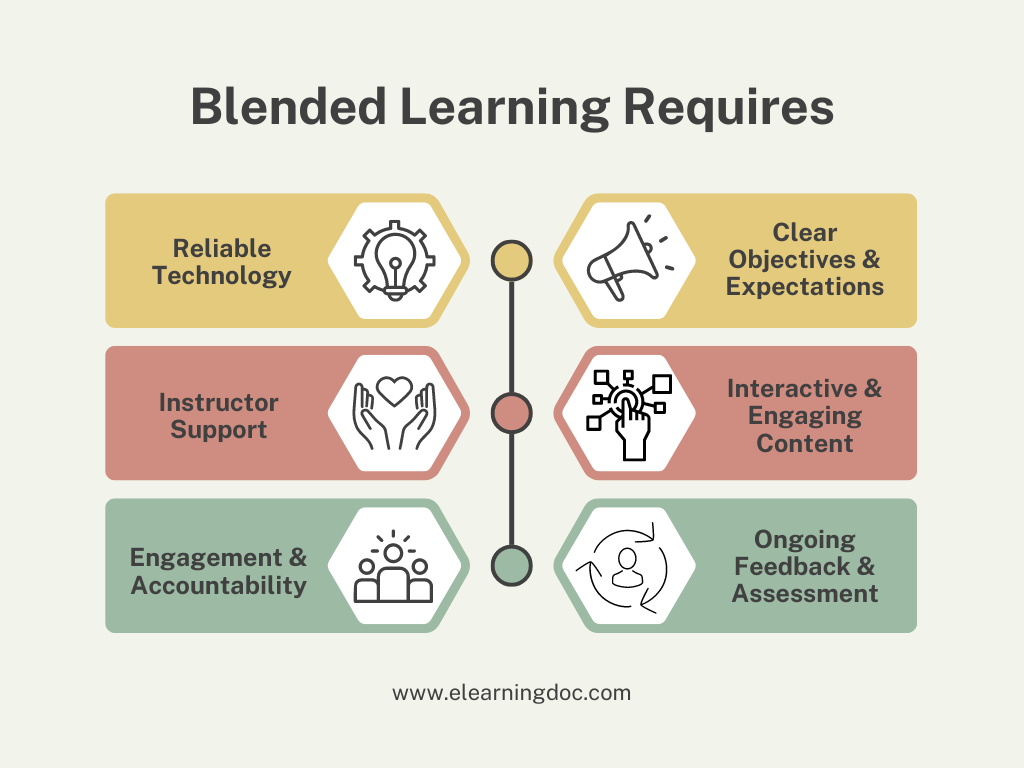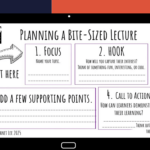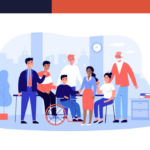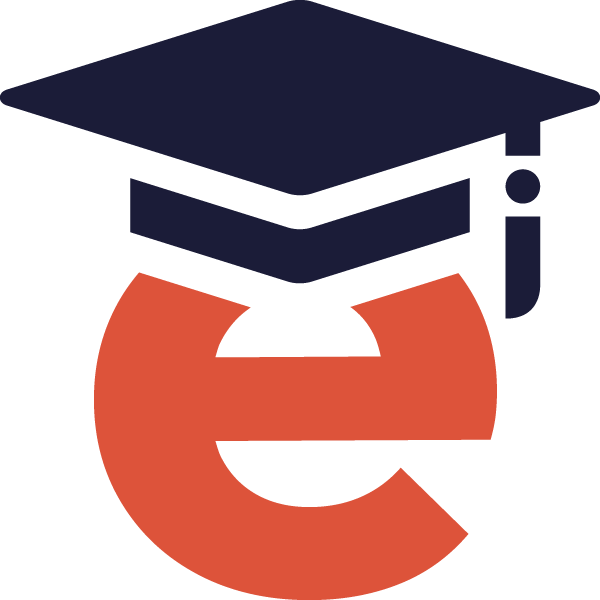Harnessing the Strength of Blended Learning
Written by Dr. Angela Robbins
As the quest for better learning methods is ever-present in education and training, harnessing the strength of blended learning has emerged as a promising solution due to technological advancements and a shift in teaching methods. It combines traditional classroom teaching with online tools (Miehlberg et al., 2023). This adaptable approach caters to the diverse needs of today’s learners, offering the best of both worlds.
Understanding Blended Learning
Unlike traditional classes, blended learning offers more flexibility and personalization (Alamri et al., 2021). Participants can learn at their own pace and access resources outside class. Instructors can give individual help based on the learner’s progress.
Fully online learning lacks face-to-face interaction but offers flexibility. However, some students may struggle without in-person classes and the personal guidance they provide. Blended learning strikes a balance, combining face-to-face and online learning benefits. It allows for personalized instruction, catering to different learning styles. Facilitators can use diverse resources to engage students effectively, offering a dynamic and adaptable approach to education.
There are several different models of blended learning. In the rotation model, learners move between various learning activities like online lessons, group work, and teacher-led instruction. The flex model lets students customize their learning by choosing when and how they access online content, with teachers providing support. In the self-blend model, students combine traditional classroom learning with online courses to meet their needs.
Understanding the benefits and challenges of harnessing the strength of blended learning and its models is crucial for making informed decisions, maximizing effectiveness, and addressing obstacles (Lotrecchiano et al., 2013). By leveraging its advantages, educators and facilitators can boost learner engagement and improve outcomes.
Benefits of Blended Learning
With blended learning, learning experiences become more personalized and tailored to the learner’s needs. With interactive and multimedia-rich content, they’ll feel more engaged and motivated, making it easier to understand and retain information.
Flexibility and accessibility are also significant advantages. Learners can access learning materials anytime and anywhere, using any suitable device. This flexibility is perfect for busy schedules and allows them to learn quickly. Moreover, blended learning caters to various learning styles and preferences, ensuring everyone can succeed (Osguthorpe & Graham, 2003).
For facilitators, harnessing the strength of blended learning boosts effectiveness by enabling more individualized instruction and support. They can better address each learner’s needs, offering personalized assistance as necessary. Additionally, integrating technology provides valuable insights that guide decision-making and planning, streamlining the instruction process for improved efficiency and effectiveness (Plough, 2017).

Overcoming Challenges
To ensure a successful blended learning experience, six key elements are needed:
- Instructional Support: Instructors need support. They should have professional development opportunities to enhance their digital teaching skills and ongoing resources to implement blended learning effectively.
- Engagement and Accountability: Learner engagement and accountability are vital. Strategies must be developed to keep participants motivated and involved in online and offline activities. Progress should be monitored, and any challenges that learners face should be addressed to create an environment where blended learning thrives (Cavanagh et al., 2017).
- Transparency: Clear learning objectives and expectations should guide the design of learning activities. This ensures that the activities align with curriculum standards and goals. Communicating expectations for both online and in-person components helps students understand what is required.
- Dynamic Content: Interactive and engaging content is pivotal in motivating and engaging students (Ghani & Taylor, 2021). Educators can create dynamic learning experiences that cater to diverse learning styles by incorporating multimedia resources, interactive simulations, and collaborative projects.
- Ongoing Evaluation: Continuous assessment and feedback are essential for monitoring student progress and guiding their learning journey. Implementing formative and informative assessment strategies allows educators to gauge understanding and provide timely feedback, enabling instructional adjustments to support student success.
By prioritizing these elements, educators can foster an inclusive, accessible, and successful learning experience for all students.
In Summary
Harnessing the strength of blended learning offers much, from personalized learning experiences to greater flexibility and improved teacher effectiveness. Yet, it also comes with its own challenges, like ensuring everyone has equal access to technology and keeping students engaged. To be successful, you need to plan, put it into action thoughtfully, and keep evaluating along the way. As educators, we must create blended learning experiences that fit our students’ needs and align with our course outcomes. Regular check-ins and feedback help us fine-tune our methods and keep improving. Despite its hurdles, blended learning is a versatile tool that can make an impact in any classroom and prepare learners for success in the digital age.
Contact eLearningDOC to discuss how we can help your company or organization with blended learning.
Read the eLearningNEWS for the latest eLearning trends for education, industry, healthcare, and business.
References
Alamri, H. A., Watson, S., & Watson, W. (2021). Learning technology models that support personalization within blended learning environments in higher education. TechTrends: Linking Research & Practice to Improve Learning, 65(1), 62–78. https://doi.org/10.1007/s11528-020-00530-3
Cavanagh, T. B., Thompson, K., & Futch, L. (2017). Supporting institutional hybrid implementations. New Directions for Teaching & Learning, 149, 111–119. https://doi.org/10.1002/tl.20233
Ghani, S., & Taylor, M. (2021). Blended learning as a vehicle for increasing student engagement. New Directions for Teaching & Learning, 167, 43–51. https://doi.org/10.1002/tl.20458
Lotrecchiano, G., McDonald, P., Lyons, L., Long, T., & Zajicek-Farber, M. (2013). Blended learning: Strengths, challenges, and lessons learned in an interprofessional training program. Maternal & Child Health Journal, 17(9), 1725–1734. https://doi.org/10.1007/s10995-012-1175-8
Muehlberg, J., Tipold, A., Heppelmann, M., & Wissing, S. (2023). Simulator-assisted training of abomasal surgery—A pilot study using blended learning and face-to-face teaching. Animals, 13(24), 3822. https://doi.org/10.3390/ani13243822
Osguthorpe, R. T., & Graham, C. R. (2003). Blended learning environments. Quarterly Review of Distance Education, 4(3), 227–233.
Plough, B. (2017). Recognizing and understanding effective blended learning in secondary classrooms. Leadership, 46(4), 28–31.
VanDerLinden, K. (2014). Blended Learning as Transformational Institutional Learning. New Directions for Higher Education, 165, 75–85. https://doi.org/10.1002/he.20085








